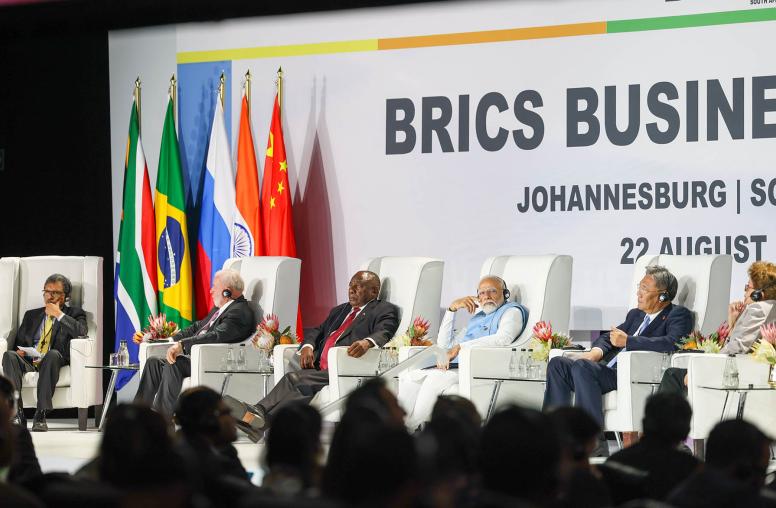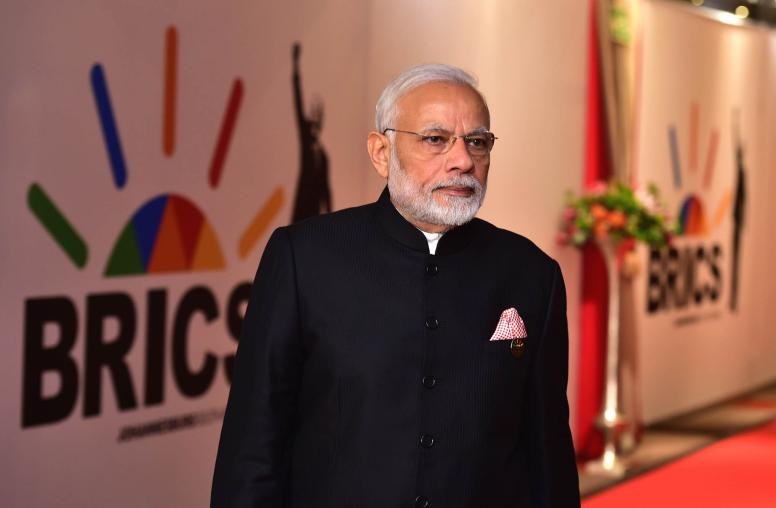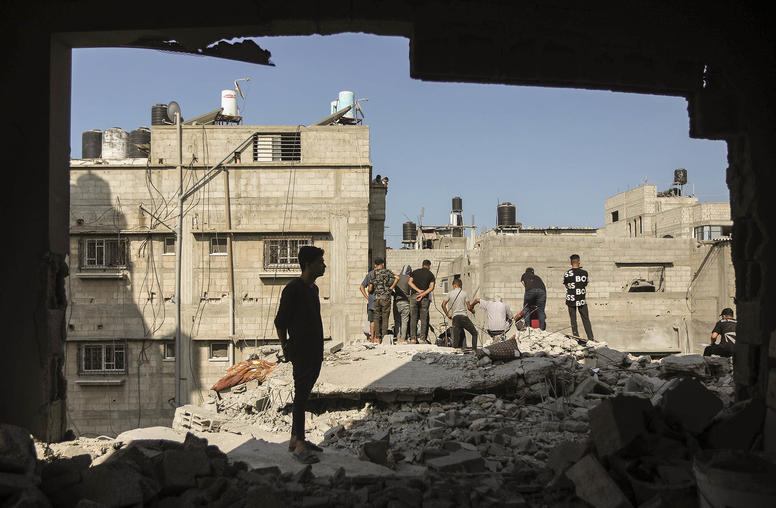An Assault on Brazil’s Government Raises Hemispheric Alarm Bells
Amid growing concerns, what can be done to prevent a resurgence of political violence in Latin America?
On January 8, hundreds of protesters fueled by rage over election results invaded federal buildings in Brazil’s capital city Brasília while tens of thousands gathered outside military installations across the country, openly calling for a coup.

Political violence in Latin America largely subsided with the end of the Cold War and military rule in the 1990s, even as criminal violence surged.
The events in Brazil — alongside recent unrest in Chile, Bolivia and Peru — have sparked concerns that violence has once again returned to the political sphere, potentially threatening the region’s vulnerable democracies. Patrick Duddy, John Feeley, P. Michael McKinley, Anya Prusa and USIP’s Keith Mines discuss how polarization has fueled violent protests throughout the hemisphere and examine how to inoculate elected governments from political extremism.
What is the political context for the assault on Brazil’s newly elected government? Is the newly inaugurated Lula’s presidency in danger?
P. Michael McKinley: Brazil, like other countries in the hemisphere, is polarized politically. The second round of presidential elections saw Luiz Inácio Lula da Silva win by a narrow margin (less than 2 percent of the more than 120 million votes cast).
Notwithstanding, Lula was elected peacefully, with no meaningful challenge to the results from high-ranking officials or the general public. When former President Bolsonaro sought to question the outcome, his allies in the Brazilian Congress, in military leadership, on the Supreme Court, among state governors and even his own vice president shut debate down within 48 hours by acknowledging Lula’s victory. Lula’s inauguration on January 1 was without incident and was attended by hundreds of thousands of people. Brazil’s political leaders rallied to condemn the violence after January 8 and to hold those responsible accountable.
It is early days yet, and information may come to light indicating broader political organization and intent. The warrants for the arrest of senior Brasília security officials suggest as much.
In the meantime, the violence in Brasília is a dangerous reflection of the reality of right-wing extremism in Brazil. The protesters reportedly organized for weeks and appear to have had financial support. Additionally, it seems many were fueled by vitriolic social media campaigns focused on election denialism and largely came from outside the capital.
Brazil, like other polarized democracies, faces the challenge of containing the potential for violence, and the untruths that lead to such extremism. The response must start at the top. The coming weeks and months will demonstrate whether Brazil’s leadership — especially the politically powerful right — can work together to continue to safeguard Brazil’s democracy.
Patrick Duddy: The rioting in Brasília, which culminated in the storming of the presidential palace, was a by-product of two prevailing realities.
First, Brazil is a deeply divided society characterized by dramatic economic inequality, racial disparities, stark regional differences and a history of government corruption. The poorest of the poor have historically had little faith in the traditional political parties, particularly those associated with the center and center-right. Many in the struggling middle and working classes have also felt frustrated and disappointed by traditional political parties in recent decades.
Second, former President Jair Bolsonaro capitalized on widespread dissatisfaction to win the presidential election in 2018. But his abrasive rhetoric, criticism of political institutions and nostalgia for military government only served to exacerbate the country’s divisions.
Current President Lula’s victory over Bolsonaro this fall left the former president’s followers feeling both enraged and disenfranchised, though Bolsonaristas obtained seats in the national legislature and won several key governorships. Since second-round election results became official, Bolsonaro’s followers have been organizing demonstrations around the country. The riot of January 8 was a part of that movement.
In the aftermath, it is important to remember that the Brazilian military did not support the rioters and there is no evidence that senior military leaders would tolerate any effort to interfere with Brazil’s democracy. The riot seems likely to have strengthened President Lula, with leaders around the region and the world expressing their solidarity and support for the country’s democratic future.
Although disruptions by Bolsonaro’s disgruntled supporters may not dissipate immediately, it seems likely their campaign will lose momentum, given the federal police response to the January 8 riots, which included hundreds of arrests. But Bolsonaro’s supporters clearly plan to make governing as difficult as they can for President Lula and his Workers Party.
What role did disinformation play in fueling the protests?
John Feeley: The sacking of Brazil's democratic seat of government on January 8 did not occur in a vacuum. The international rise in nationalistic and nativist movements was influential during the Bolsonaro presidency and in the aftermath of the close 2022 election.
Purposeful disinformation campaigns, spread virally on Telegram, WhatsApp, Facebook and other closed networks motivated — and will continue to motivate — the Bolsonaro supporters that stormed government buildings in Brasília.
Much of the post-election messaging in these disinformation campaigns has focused on claiming the election was "stolen" or "fraudulent," in some cases even before the ballots were counted.
Additionally, disinformation campaigns often weave in contentious cultural issues to portray President Lula and his supporters as extremists seeking to undermine traditional tenets of Brazilian society — only further inflaming social and political tensions in the country.
Unfortunately, these disinformation campaigns aren't going away. Despite the apparent failure of the Bolsonaro protesters, the country remains terribly polarized. Disinformation and conspiracy theories, character assassination and "fake news" reports degrading Lula and his progressive supporters will, sadly, continue to be a facet of Brazil's national discourse for some time to come.
Is the Brazil situation sui generis or is it part of a broader trend toward political violence in the region?
Keith Mines: It might not matter much to victims whether violence is politically or criminally motivated, but it does matter to those trying to find solutions to violence and to curb its scale.
The Western Hemisphere has long been wracked by higher levels of violence than most of the planet, whether criminal or political. From the 1970s to 1990s, many Latin American countries passed through periods of intense political violence, as the Cold War played out amid high levels of inequality and weak civil and political institutions. Cycles of violent upheaval sparked repression and state-sponsored terrorism in what were often intensely violent periods of political conflict.
The demise of the Soviet Union and the return of electoral democracy allowed citizens to settle conflicts without political violence. However, criminal violence surged at this time as drug trafficking by armed gangs produced levels of criminal violence that either compared to or exceeded prior civil conflicts.
The criminal violence continues to this day — but there now looms the prospect of another wave of political violence as groups on the left and right organize to tear down institutions that won’t bend to their will, upending systems of governance.
The late German philosopher Hans Magnus Enzensberger called this “molecular civil war,” in which brewing low levels of violence can “escalate at any time to epidemic proportions.” In today’s civil wars, he suggested, you don’t need uniforms and organized legions, “hatred on its own is enough.”
How does a country like Brazil ensure that politics are managed peacefully and without spasms of violence?
Anya Prusa: There are no simple fixes for the issues that contributed to the attack in Brasília, or to the problem of political violence in Brazil and Latin America more generally.
Democracy not only needs free and fair elections and avenues for meaningful political debate to function, but also trust in these institutions and their outcomes. And it needs mechanisms for accountability, whether through the legal system or at the ballot box.
Brazil is already starting to establish accountability by detaining more than 1,500 rioters and — perhaps more importantly — by launching investigations to identify those who instigated, organized and financed the January 8 attacks.
For accountability to serve as a deterrent long-term, however, the government will need to show that political leaders who knowingly spread disinformation and encourage violence, whether directly or tacitly, will also face repercussions rather than be rewarded with power or impunity. The application of justice must be transparent and impartial to avoid further inflaming tensions and hardening extremist opposition.
Many supporters of former President Jair Bolsonaro already believe that the system is rigged against them. An overzealous judicial response runs the risk of reinforcing that feeling, even among those who disapprove of vandalism and violence.
In the long run, a comprehensive response must address this disaffection among broad segments of the population. This is true not only in Brazil, but also across Latin America, where the rise of political outsiders and high rates of voter abstention testify to frustrations with the quality and responsiveness of officeholders and the policies they implement.
These frustrations can undermine faith even in free, fair and well-run elections, like those in Brazil, where authorities spent months countering disinformation and planning for a seamless election day.
Governments also need to address the legitimate grievances that help drive polarization, including corruption, poverty, inequality and inadequate access to health care or education. This will take time, resources and significant political will.
In Brazil, there may now be a unique window of opportunity to begin the work of rebuilding as the political establishment comes together to condemn political violence and reaffirm its commitment to democracy.
P. Michael McKinley is the former U.S. Ambassador to Brazil.
Patrick Duddy is the director of Duke University’s Center for Latin America and Caribbean Studies.
John Feeley is the executive director of the Center for Media Integrity and a retired U.S. ambassador.
Anya Prusa is a senior director at Dentons Global Advisors - Albright Stonebridge Group


